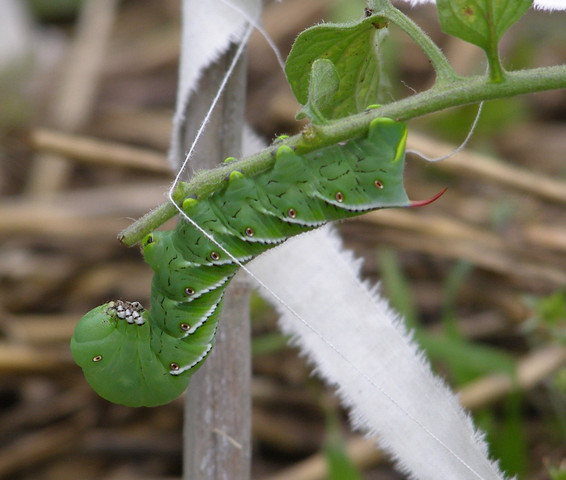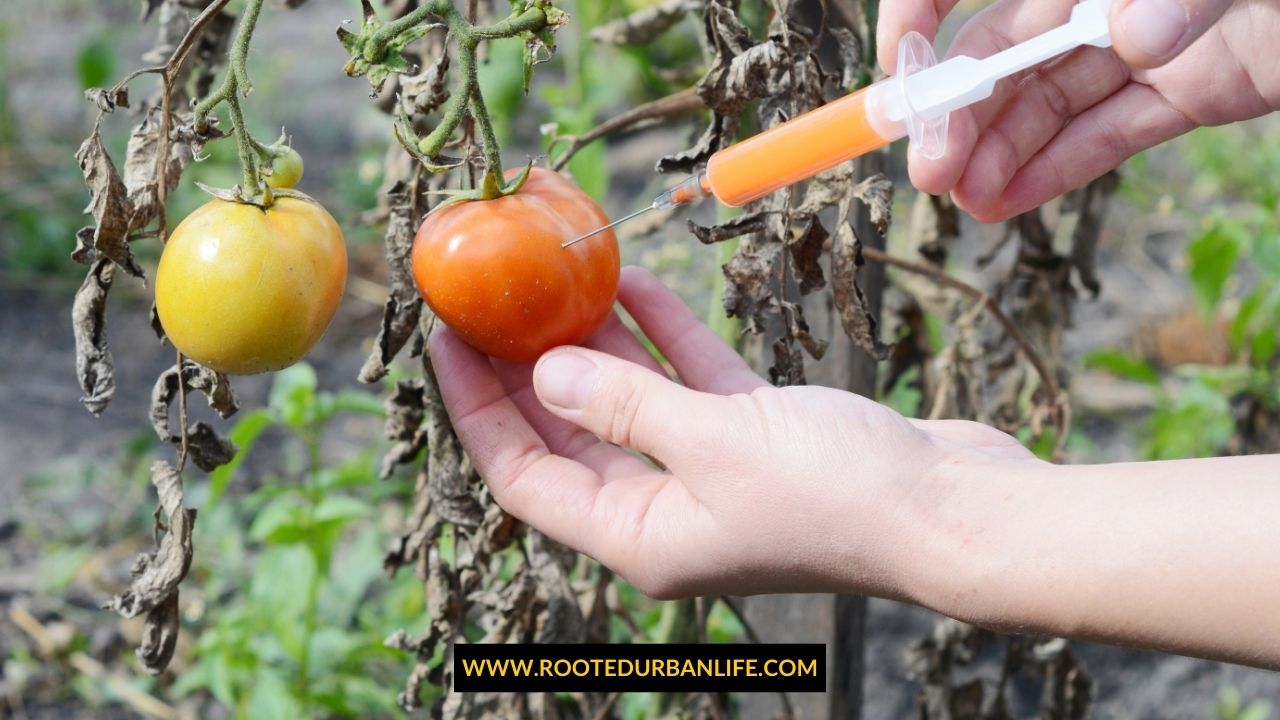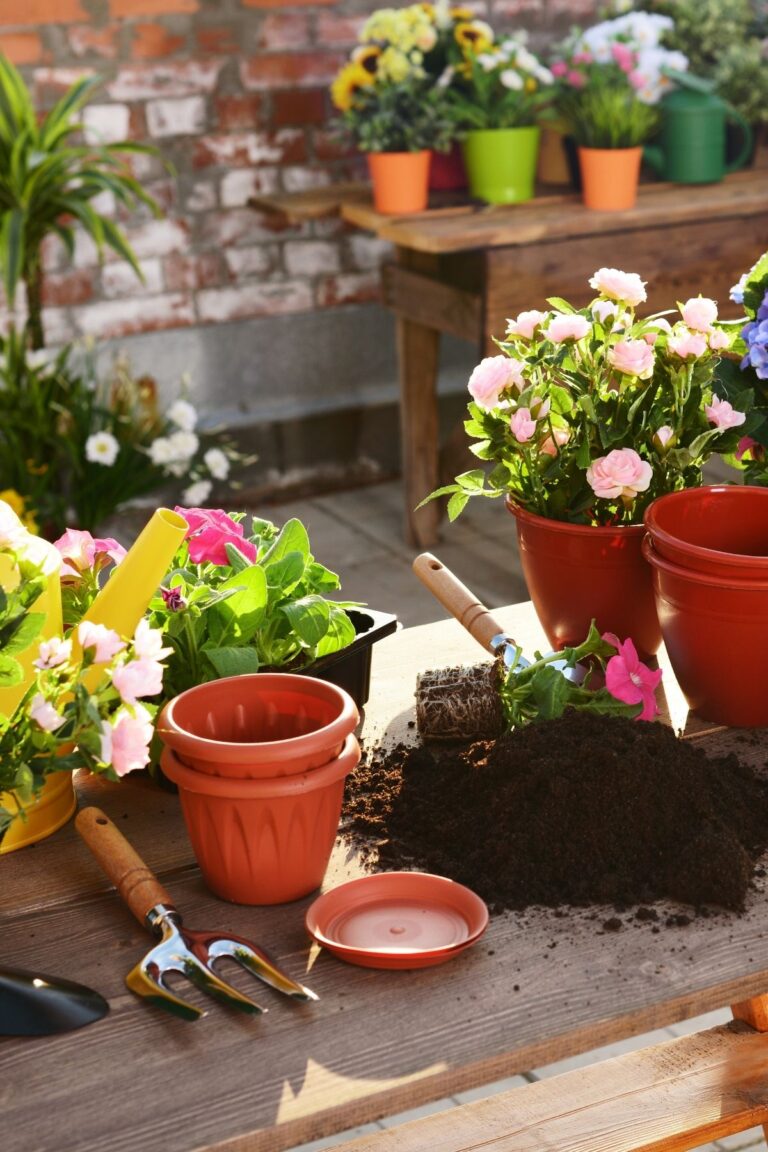Tomato Rescue: DIY Solutions for Pests & Disease
Discover proven strategies to outsmart pests, dodge diseases, and harvest a bumper crop of tasty tomatoes.
Problem Growing tomatoes often feels like waging war against nature itself. Pests devour leaves overnight, diseases sneak in with each rainfall, and your dreams of homegrown harvests wither before your eyes. After investing weeks of care, watching hornworms demolish your plants or seeing blight spread through your carefully tended rows isn’t just disappointing—it’s demoralizing. And the conventional solutions? Often chemical-heavy approaches you’d rather not use on food destined for your family’s table.
What You Will Learn This guide will help you uncover fresh insights and time-tested tactics that transform your relationship with your plants, teaching you to:
- Decode the subtle visual cues that reveal problems before they become disasters
- Implement strategic defenses that work with nature instead of against it
- Build resilience into your garden from the ground up
- Create a thriving ecosystem where your tomatoes become naturally resistant to common threats
Say goodbye to gardening heartbreak and hello to harvests worth documenting on social media. These aren’t complicated techniques requiring specialized equipment—just smart, observant gardening that delivers increasingly better crops every season.

1 The Secret Language of Tomato Plants: Reading the Signs
Master these visual cues and you’ll catch problems weeks before the average gardener:
- Aphids: Aphids: These tiny sap-suckers announce their presence by curling young leaves and leaving a sticky honeydew sheen that attracts ants. Don’t wait until you see colonies—grab a magnifying glass and check new growth weekly to catch them before they multiply into the thousands.
- Whiteflies: Give a suspect branch a gentle shake and watch for what looks like a miniature snowstorm in summer. Their calling cards include yellowing leaf veins and stippled patterns. Flip leaves over to check their undersides where these sneaky invaders establish hidden colonies.
- Hornworms: These voracious green giants are masters of disguise, blending perfectly with foliage while stripping plants from the top down. Look for their distinctive black droppings below plants and hunt at dawn or dusk when their silhouettes stand out dramatically against the sky. One hornworm can defoliate a young plant in under 48 hours—making early detection critical.
- Early Blight: Those innocent-looking yellow spots with concentric rings on lower leaves aren’t just cosmetic—they’re the opening salvo of a disease that works its way upward. Remove affected leaves immediately and improve air circulation to stop the spread.

2 Cultivating Resilience: Why Prevention Trumps Reaction Every Time
The most successful tomato gardens don’t just survive challenges—they develop inherent resistance that makes problems less frequent and less severe. Build this resilience from day one:
Strategic Variety Selection: Match your tomato varieties to your specific climate and challenges—heat-tolerant types for southern gardens, quick-maturing varieties for northern short seasons, and disease-resistant cultivars for humid regions. This isn’t just good gardening; it’s working with your environment instead of fighting it.
Generous Spacing: Give each plant 24–36 inches of personal space in all directions. This isn’t wasteful—it’s strategic. Proper spacing keeps air flowing freely, reduces disease transmission, confuses pests searching for their next meal, and gives roots room to develop extensive systems that support stronger plants. Crowded plants are stressed plants, and stressed plants are vulnerable plants.
Water Management Mastery: Implement deep, consistent, root-level watering combined with quality mulch to slash blight risks. The cardinal rule? Leaves should never be wet. Water early in the day, at soil level only, allowing foliage to dry completely before evening. This single practice prevents more disease than any spray ever could.
3 Smart Protection Strategies
Strategic Companion Planting: Create a plant community where each member serves a purpose. Basil planted between tomatoes confuses and repels flies while improving flavor. Marigolds release compounds that suppress harmful nematodes in the soil. Nasturtiums act as sacrificial decoys, luring aphids away from your precious tomatoes. This isn’t folklore—it’s plant chemistry working in your favor.
Living Soil Management: Cultivate soil teeming with beneficial microbes through regular compost additions and minimal disturbance. These microscopic allies colonize root systems, outcompete pathogens, and enhance nutrient uptake. Healthy soil creates plants with natural immunities that chemical fertilizers simply cannot replicate. The result? Plants that resist disease instead of succumbing to it.
Tactical Timing: Plant early to harvest before late blight’s peak season, or stagger plantings to hedge against weather-related disasters. In pest-prone areas, coordinate planting to avoid peak insect cycles. Timing isn’t just about the calendar—it’s about synchronizing your garden with natural cycles to minimize vulnerability.
4 The Power of Observation: Your Most Underrated Tool
Develop the habit of daily plant checks, ideally in morning light when problems are most visible.
- Catch hornworms when they’re the size of a matchstick.
- Notice slight wilting before it becomes systemic collapse.
- Correlate weather patterns with plant responses to anticipate needs.
- Identify which varieties perform best in your specific microclimate.
Five minutes of attentive observation saves hours of crisis management later. The most successful growers aren’t necessarily the most experienced—they’re the most observant.
5 DIY Organic Pest Deterrents That Actually Work
Once your keen observations reveal unwelcome visitors, use these kitchen-crafted solutions that protect both plants and beneficial insects:
Garlic-Pepper Fortress Spray: This potent combination creates an invisible barrier insects refuse to cross.
- Blend 4 cloves garlic, 1 tablespoon cayenne pepper with 1 quart water
- Let steep overnight, strain, then add 1 tablespoon biodegradable soap
- Apply weekly to plant surfaces, focusing on new growth and undersides of leaves
- The sulfur compounds in garlic disrupts pests’ sensory perception while capsaicin creates an inhospitable environment
Neem Oil Emulsion: Nature’s multi-purpose defender works on everything from aphids to fungal issues.
- Mix 2 teaspoons pure neem oil with 1 teaspoon mild liquid soap and 1 quart warm water
- Shake vigorously to emulsify, then apply during evening hours when beneficial insects are less active
- Reapply after rain or every 7-10 days during problem periods
- Works through multiple mechanisms: disrupts feeding, prevents molting, and reduces egg viability
Milk Spray Shield: This surprisingly effective solution creates a protective microbiome that fights pathogens.
- Dilute 1 part milk with 9 parts water in a spray bottle
- Apply to leaves weekly during humid periods when fungal pressure increases
- The proteins in milk create an environment where beneficial microbes thrive while suppressing pathogenic ones
- Bonus: Adds calcium to prevent blossom end rot when absorbed through leaves
Companion Plant Tea: Harness the protective compounds already in your garden.
- Steep 1 cup chopped tomato leaves, basil, and marigold flowers in 2 quarts boiling water
- Allow to cool completely, strain, and add 1/2 teaspoon mild soap
- Apply as a preventative spray during peak pest pressure periods
- The natural alkaloids and terpenes confuse and repel specific tomato pests
Remember: These solutions work best as part of your integrated approach. They complement—rather than replace—good spacing, healthy soil, and proper watering. Apply early in the day or in evening to prevent leaf burn, and always test on a small section of plant first.
6 Troubleshooting Guide
| Symptom | Likely Cause | Solution | Prevention |
|---|---|---|---|
| Curled leaves with no discoloration | Heat stress or excessive pruning | Water deeply and provide afternoon shade; avoid further pruning | Maintain consistent moisture; use mulch to regulate soil temperature |
| Yellow leaves starting from bottom | Normal aging or nitrogen deficiency | Remove lower yellowed leaves; apply balanced organic fertilizer | Regular feeding schedule; compost-rich soil |
| Dark spots with yellow halos on leaves | Early blight | Remove affected leaves; apply copper fungicide or milk spray | Mulch soil surface; maintain proper spacing; rotate crops |
| Black, leathery patches on fruit bottoms | Blossom end rot (calcium deficiency) | Maintain consistent watering; apply calcium spray to foliage | Add crushed eggshells to planting holes; maintain even soil moisture |
| Fruits with cracks radiating from stem | Inconsistent watering | Stabilize watering schedule; mulch heavily | Deep, regular watering; drip irrigation system |
| Flowers dropping without forming fruit | Temperature extremes or lack of pollination | Hand-pollinate flowers; protect from temperature extremes | Plant when temperatures are optimal; increase pollinator presence |
| Stunted plants with yellowing leaves | Root-knot nematodes | Boost soil biology with compost; consider removing severely affected plants | Plant marigolds as companions; use resistant varieties; solarize soil |
| White, powdery coating on leaves | Powdery mildew | Remove worst affected leaves; spray with milk solution or neem oil | Improve air circulation; water at soil level only |
| Fruits with tiny pinpricks or dimples | Stink bug damage | Hand-pick bugs; deploy trap crops; use insect netting | Companion planting with repellent herbs; maintain garden diversity |
| Catfacing (deformed, scarred fruit) | Cool weather during flowering or environmental stress | Not correctable on affected fruits; maintain temperatures | Plant after soil has warmed; use row covers for early plantings |
| Leaf edges turning brown and crispy | Fertilizer burn or drought stress | Flush soil with water; adjust watering schedule | Follow fertilizer instructions precisely; use moisture meter |
| Wilting despite moist soil | Bacterial or fungal wilt | Remove affected plants entirely; do not compost | Crop rotation; resistant varieties; sterilize tools between plants |
| Fruits with concentric rings or bull’s-eyes | Tomato spotted wilt virus | Remove and destroy affected plants | Control thrips (virus carriers); use resistant varieties |
| Fruits not ripening fully | Cool temperatures or excessive nitrogen | Reduce nitrogen fertilizer; be patient in cool weather | Balance fertilizer; choose varieties suited to your season length |
| Leaves with silvery trails | Leaf miners | Remove affected leaves; use yellow sticky traps | Cover young plants with row covers; attract parasitic wasps |
| Brought to you by rootedurbanlife.com | |||
7 Frequently Asked Questions
Q: What if pests get out of control?
A: Start with hand-picking for larger pests and insecticidal soap for smaller ones. Focus on strengthening your prevention system—healthy plants with good companions rarely face severe infestations.
Q: How do I stop blight from ruining my crop?
A: Water at soil level only, maintain 12-inch clearance from ground to lowest leaves, and improve drainage. Consider raised beds, early-season varieties, or simple rain shelters in challenging climates.
Q: Is growing tomatoes worth the effort?
A: Absolutely. The flavor of a sun-ripened garden tomato makes store-bought pale in comparison. Plus, a single well-managed plant can yield 20+ pounds of nutritious fruit—making the effort richly rewarding both financially and gastronomically.
8 Key Takeaways
- Prevention First: Build resilience from day one rather than fighting problems after they appear
- Daily Plant Checks: Learn to spot warning signs early—saving leaves instead of losing harvests
- Smart Companions: Use strategic plantings for natural pest control without chemicals
- Water Wisely: Keep leaves dry, soil moist to slash disease risk dramatically
- Give Space: Proper spacing (24-36″) improves air flow and boosts production
- Strategic Timing: Work with your local climate to minimize vulnerability
- Living Soil: Nurture beneficial microbes that create natural plant immunity
9 Next Steps
Now you are ready to explore these additional resources:
- Unlock the secrets of growing tomatoes in containers
- Transform kitchen scraps into nutrient-rich soil
- Discover the strategic partnerships that deter pests and attract pollinators.
- Maximize your garden space with vertical gardening
Ready to grow the healthiest, most productive tomatoes in your neighborhood? Put this troubleshooting guide to work and transform your tomato growing experience!
Don’t let common problems steal your garden joy. Bookmark this guide for quick reference throughout the growing season, and remember that even experienced gardeners face challenges—the difference is knowing how to respond quickly and effectively.
What tomato variety will you rescue or protect using these tips? Let us know below!








